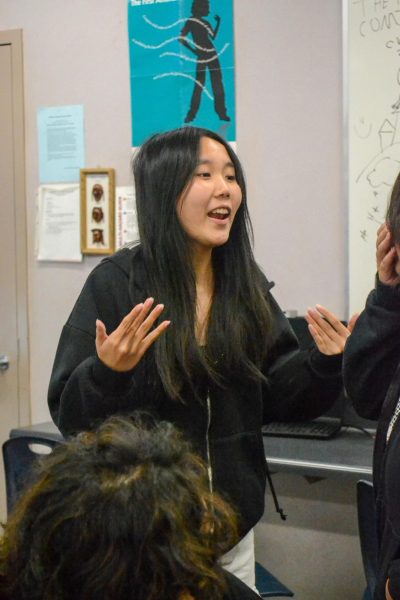Little did the world know that a cat-like British girl with a vibrant red bow, a dandelion-yellow t-shirt and denim overalls would become an ambassador for the United Nations less than ten years after her creation. Loved by children and adults alike for her adorable appearance and bubbly personality, Hello Kitty has become so much more than a pop culture icon. By encouraging friendships and providing comfort to fans, she has become an international symbol of peace.
As part of Japanese entertainment company Sanrio’s “One World, Connecting Smiles” vision, Hello Kitty was introduced in 1974 on a vinyl coin purse marketed to young girls. Within two years, she appeared on shelves across the United States and quickly became a global phenomenon, even being appointed as the United States children’s ambassador by the United Nations Children’s Fund nine years after her conception.
Hello Kitty is an embodiment of “cute culture,” a term coined to encompass personas that are adorable and lovable. Hello Kitty is so influential because she represents cute culture’s power to bring comfort to and spark positivity among communities experiencing hardship.
For example, Sanrio partnered with a Brazil-based organization in 2014 to shed light on the stigmas faced by children living with cancer by having Hello Kitty go “bald” in comic strips and short videos for the country’s National Childhood Cancer Day. The campaign’s immediate success led to its inclusion of 40 other popular cartoon characters such as Snoopy and Garfield so that larger audiences from around the world could reflect on their own actions and empathize with the experiences of children living with cancer.
While politicians may try to garner support by shedding light on pressing issues, sharing those stories through the eyes of a character like Hello Kitty makes rallying for an important cause more accessible to a broader population. Bonding over shared love for cute characters not only enables people to build meaningful connections, but also work together to make a difference in their communities and beyond by learning more about and taking action against global issues.
“There’s so much happening around the world right now, so I think Sanrio is able to use Hello Kitty to spread important messages because of how cute she is,” freshman Kiersten Oh said.
Notably, Sanrio’s involvement in advocating for change grew especially evident when the company launched the #HelloGlobalGoals campaign in partnership with the UN to highlight some of the Sustainable Development Goals. From promoting exercise among Japanese youth by teaming up with Japanese anime character Shimajiro for an “Exercise with Friends” video series to comforting midwives and children at a Rohingya refugee camp in Bangladesh, Hello Kitty has connected with fans on a personal level to ignite a movement for compassion.
In this world ravaged by political division and hatred, her success can be attributed to Sanrio’s unwavering dedication to spreading friendship and empathy to all, regardless of their identity, background, socioeconomic status, beliefs or cultural values. She was initially created with no origin or background story and had no national ties to Japan.
“By eliminating a level of exoticism and national branding, the products become easy to consume because they’re not targeted toward any specific culture, gender or age group,” said Rachel DiNitto, co-director of the Asian and Middle Eastern Studies Program at William & Mary in an interview with Megan Shearin.
Some may believe that Hello Kitty is too childish to be anything more than a $10 plush or a waterproof sticker, but her far-reaching influence as a cute character can unite people of all ages towards meaningful change.



![AAAAAND ANOTHER THING: [CENSORED] [REDACTED] [BABY SCREAMING] [SIRENS] [SILENCE].](https://thehowleronline.org/wp-content/uploads/2025/06/lucy-1200x800.jpg)

















































